Abstract
A preliminary field experiment was undertaken to evaluate the efficacy of alum precipitated toxoids of Sphaerophorus necrophorus prepared from sonicated whole cells and cell fractions to reduce the incidence of bovine abscesses. A total of 108 calves were divided into five groups and treated as follows: I. uninoculated control, II. adjuvant inoculated control, III. 15.5 mg protein of sonicated (fragmented cells) toxoid, IV. 10.5 mg protein of cytoplasmic toxoid. V. 15.5 mg protein of cytoplasmic toxoid. All animals were maintained under similar conditions to those prevailing in feedlots in Alberta. Livers were examined at slaughter. The most promising result was achieved with the injection of 15.5 mg protein of cytoplasmic toxoid. In this treatment group, no scars (healed lesions) were found in the liver and the incidence of liver abscesses was reduced to 10% from the average 35% liver abscesses and scars found in the uninoculated and adjuvant inoculated groups. The toxoid from sonicated whole cells did not reduce liver abscess incidence. These data suggest that the incidence of liver abscesses in cattle fattened in feedlots may be reduced by immunization.
Full text
PDF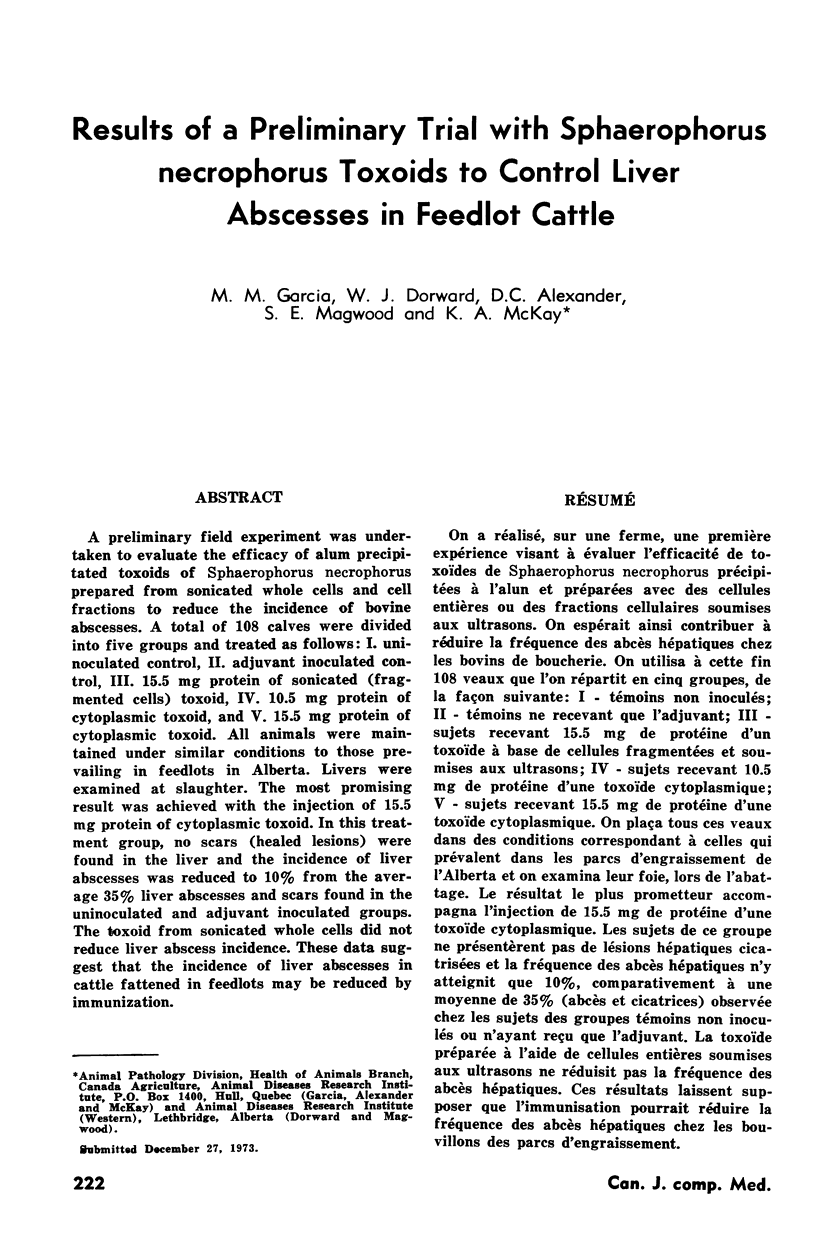
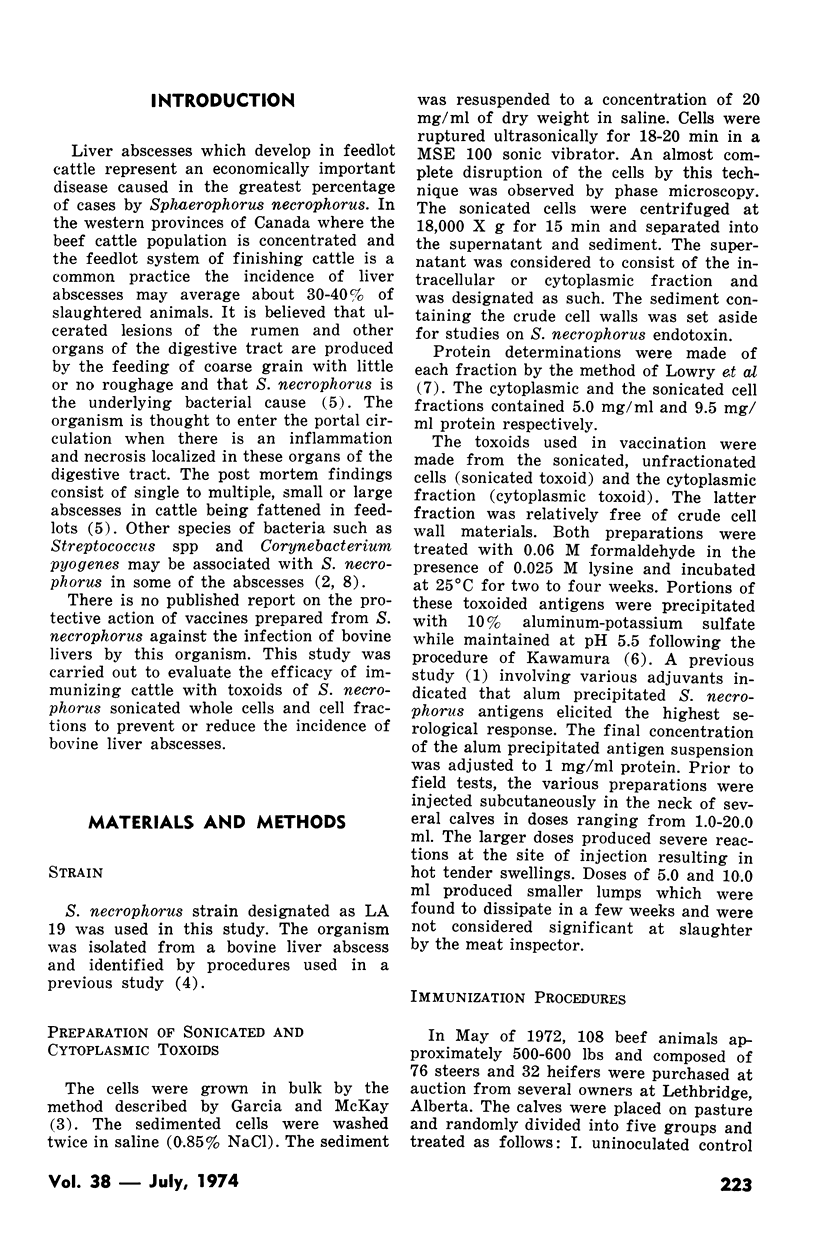
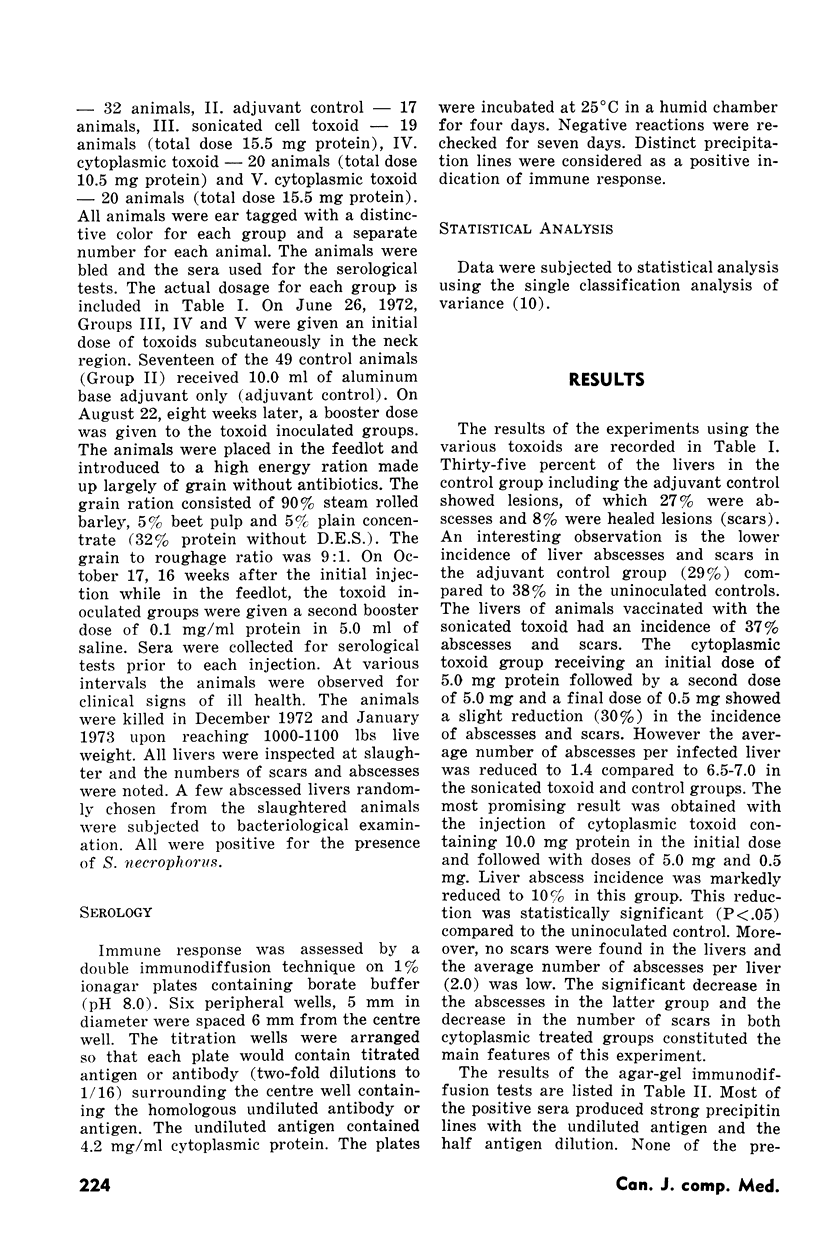
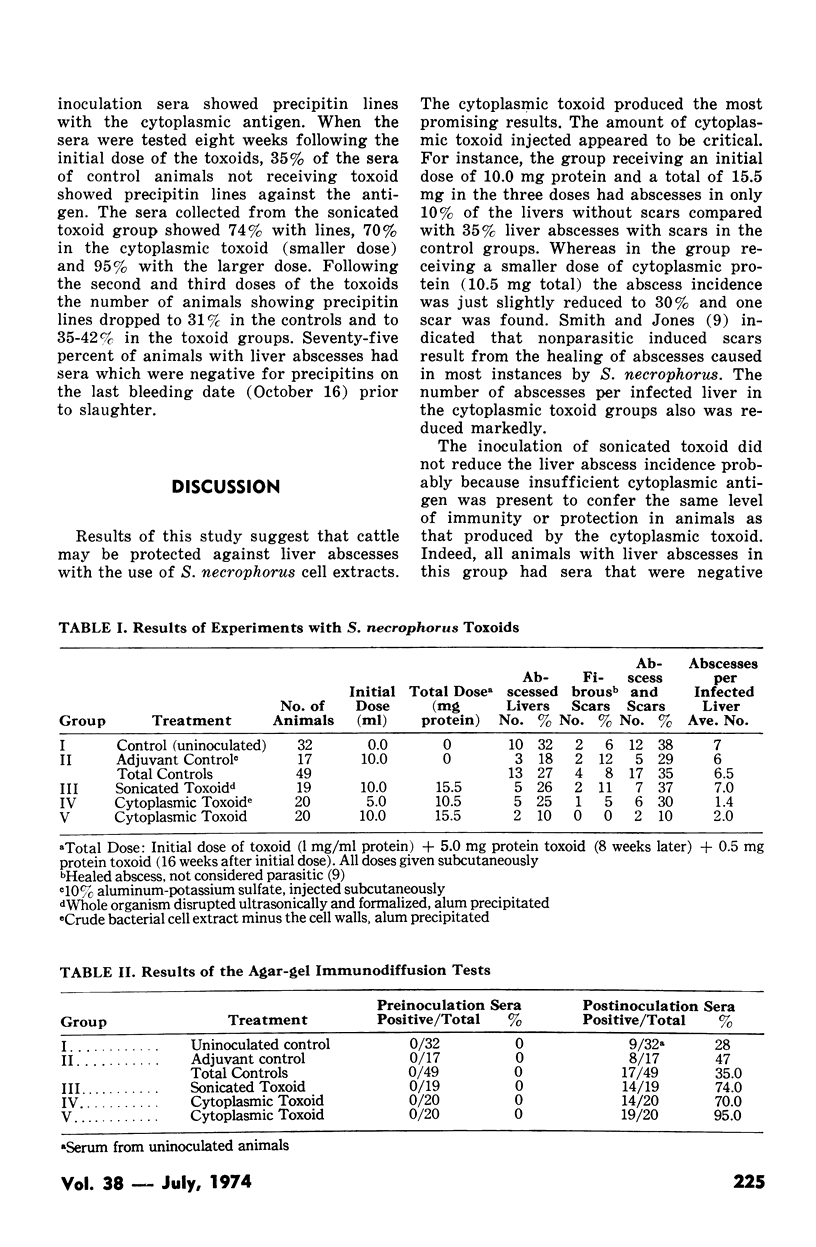
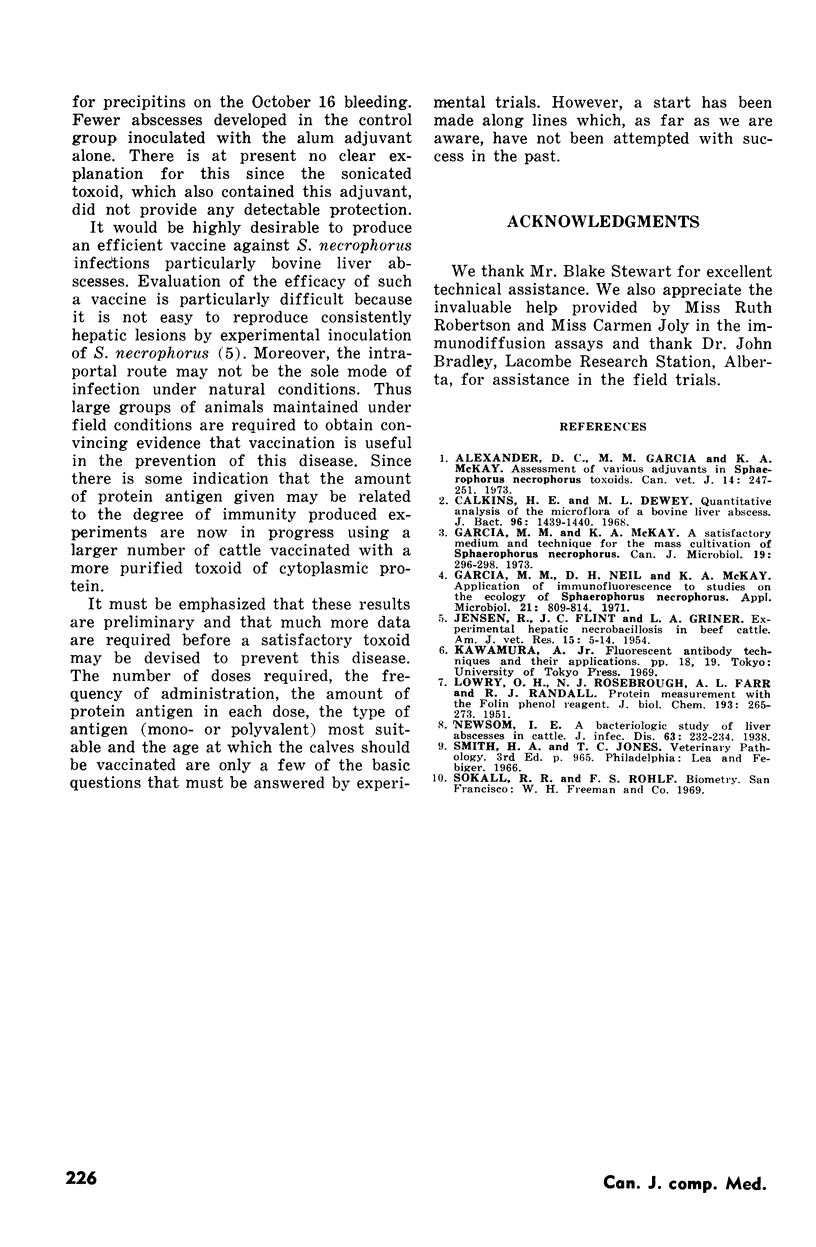
Selected References
These references are in PubMed. This may not be the complete list of references from this article.
- Alexander D. C., Garcia M. M., McKay K. A. Assessment of various adjuvants in sphaerophorus necrophorus toxoids. Can Vet J. 1973 Oct;14(10):247–251. [PMC free article] [PubMed] [Google Scholar]
- Calkins H. E., Dewey M. L. Quantitative analysis of the microflora of a bovine liver abscess. J Bacteriol. 1968 Oct;96(4):1439–1440. doi: 10.1128/jb.96.4.1439-1440.1968. [DOI] [PMC free article] [PubMed] [Google Scholar]
- Garcia M. M., McKay K. A. A satisfactory medium and technique for the mass cultivation of Sphaerophorus necrophorus. Can J Microbiol. 1973 Feb;19(2):296–298. doi: 10.1139/m73-046. [DOI] [PubMed] [Google Scholar]
- Garcia M. M., Neil D. H., McKay K. A. Application of immunofluorescence to studies on the ecology of Sphaerophorus necrophorus. Appl Microbiol. 1971 May;21(5):809–814. doi: 10.1128/am.21.5.809-814.1971. [DOI] [PMC free article] [PubMed] [Google Scholar]
- JENSEN R., FLINT J. C., GRINER L. A. Experimental hepatic necrobacillosis in beef cattle. Am J Vet Res. 1954 Jan;15(54):5–14. [PubMed] [Google Scholar]
- LOWRY O. H., ROSEBROUGH N. J., FARR A. L., RANDALL R. J. Protein measurement with the Folin phenol reagent. J Biol Chem. 1951 Nov;193(1):265–275. [PubMed] [Google Scholar]


